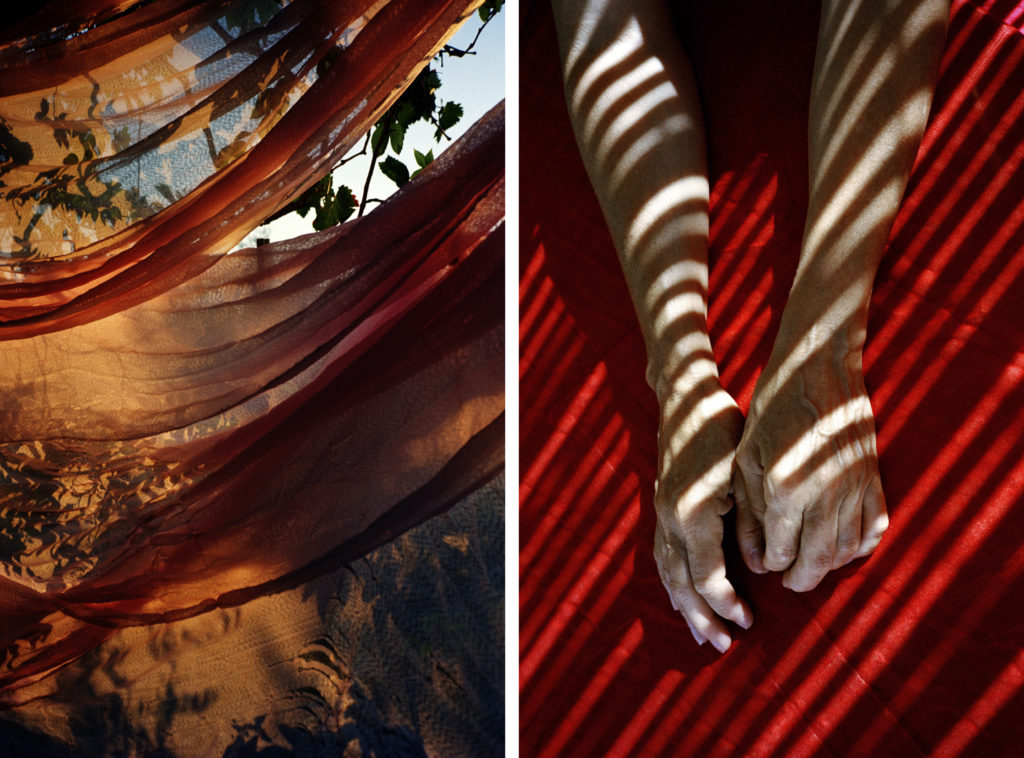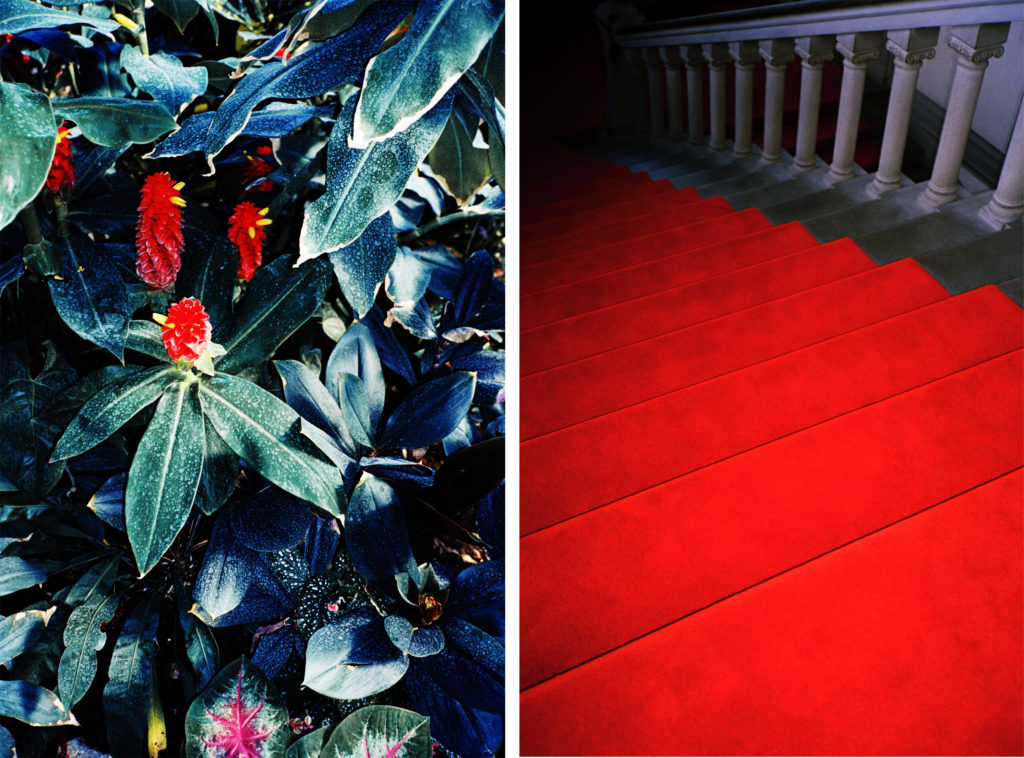Marguerite Bornhauser
Red Harvest
The exhibition Red Harvest, exhibited at Paris Photo, takes its title from the book Red Harvest by Dashiell Hammett, a pioneer of the American black novel. The artist presents a selection of photographs from his recent production which, through unpublished visual associations, seem to be the starting point of an enigmatic narrative. These images set a scene where the torpor of summer skies, indolent bodies and play of light are suddenly interrupted by a broken glass or a splash – all signs that something has just happened.
Marguerite Bornhauser’s work combines fortuitous scenes and carefully constructed compositions, blurring the lines between reality and ction. By refusing to caption his images and place them in their shooting context, the artist makes every shot the origin of a deliberately subjective narrative. His photographic language, marked by intense colours, implacable shadows and close-ups, offers a free interpretation of reality.
” (…) Here again, we find association and false leads, the familiar and the unknown, the gure and the motive, life and its neglected counterparts. Lee Friedlander once said that the extraordinary thing about photography is that you take a picture of one thing and get all those other things: on the edge of the frame; at the corner of the eye; in the superposition of colours and shadows; subtlety at the limits of the observable spectrum. Bornhauser’s work is not exciting because, like a modern stylist, she would create her own little chromatic world, but because, like the Continental collaborator, she carries out the difficult task of observation, assembling the fragments of the world until they constitute a more important whole than their simple addition. In Red Harvest, chromatic details could be perceived anecdotally, as atmospheric asides intended to sublimate the immersive power of the ction. But in Red Harvest, bodies burned by the sun, too bright waters, blazing skies and broken shadows produce something else. Rather than proposing a false reality in which we could lose ourselves, these elements extract us from life as it is lived, or at least as we usually live it on the surface, to lead us deeply into a hyper-present and super-saturated alternative truth. And as with Red Harvest’s bright red tie, the colours here are never purely or simply symbolic, they do not mean anything specific or precisely denial. On the contrary, colour itself means, by its presence and appearance, its variety and intensity, its organization and disposition, that we are here in an original world, and that we see it differently. »
Simon Baker, Director, MEP, Paris August 2019
More on: http://margueritebornhauser.com/
http://margueritebornhauser.com/

